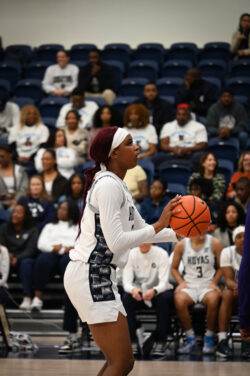Monday night, Roger Federer’s five-year reign as U.S. Open champion came to a dramatic end, when the Swiss maestro was bested in a grueling five-set match by the Argentinian upstart Juan Martin del Potro. For two sets, Federer threw the kitchen sink at the massive twenty year-old—who is, at six-foot-six, the tallest Grand Slam winner in the history of the sport—mixing spins and angles like a wily, racket-wielding magician. But del Potro traded body blows, riposting with a brutish forehand that routinely propelled the ball more than 105 miles per hour. In the match’s final frame, Federer capitulated, going down 6-2 in a halfhearted effort. Like Federer’s nemesis Rafael Nadal, del Potro represents a new breed of tennis player: a hulking physical specimen capable of overpowering the Roger Federers and Andy Murrays of the world.
Del Potro’s win illustrates a trend not limited to tennis: raw, inherent athleticism dominating opponents reliant on finely-honed skill. This is not to say that Larry Fitzgerald or Adrian Peterson are in any way greater than Jerry Rice or Barry Sanders, but the new breed can run faster, jump higher, and out-muscle opponents like no one who came before. This phenomenon is a result of genetic evolution, superior equipment technology, and more specialized training methods and dietary regimens.
The trend is evident in all sports, though more quantifiable in some—it seems that runners and swimmers set new world records in every major competition. Never before has a sprinter as tall as the 6’5” Usain Bolt risen to prominence. His broad stride and spidery frame should be a detriment to the quick leg turnover and explosive momentum required to win the 100-meter dash, but Bolt has rewritten the record books with his spindly, piston-like legs. After running a once-unthinkable 9.59 seconds at August’s World Championships, Bolt proposed that a cartoonish 9.4 is within his reach.
Meanwhile, right here in our backyard, Alexander Ovechkin of the Washington Capitals has distinguished himself as the greatest hockey player on the planet. What he lacks in the graceful stickhandling and fluidity of motion of , say, Mario Lemieux, Ovechkin makes up for with punishing checks and Bolt-like speed on breakaways. It is nearly impossible to knock him off the puck; his imposing stature evokes the image of an all-pro linebacker on ice skates.
The persisting dominance of inherent athleticism is most visible in basketball, where Kobe Bryant is the last great purveyor of a style of play that favors craftiness and a supreme comprehension of the game; too quickly, smart play is giving way to one that emphasizes reckless, unstoppable forays to the basket. Bryant, like Michael Jordan before him, dominates his opponents with an arsenal of carefully crafted moves—there are no holes in his offensive game. The new guards, exemplified by Dwayne Wade and LeBron James, are more single-minded attackers. With springs in their shoes and shields for shoulders, they plow through big bodies like downhill skiers through slalom gates, settling for jump shots only when wary defenders step in to cut off driving lanes.
Is this a change for the better? After all, sports are the ideal arena for displaying freakish athleticism of the likes of Ovechkin and del Potro. But it comes at the expense of masterminds like Bryant and Federer, whose grace and technique not only lend a certain aesthetic quality to their play that has been lost upon this new generation of athletes, but also make the players more relatable to our own human experience. The threat of near extinction only makes their supremacy all the more unbelievable.
Show Walker your raw athleticism at wloetscher@georgetownvoice.com.





Really nice article.
This Walker guy really knows Tennis!